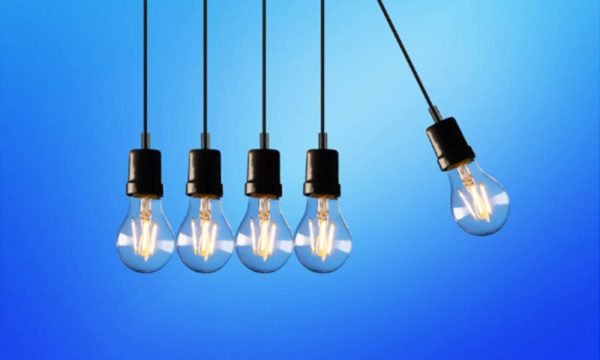In recent years, the importance of water conservation has come to the forefront, driving innovation in irrigation. The quest for more efficient ways to maintain our lawns and gardens without wasting precious water resources has led to significant advancements.
In this article, we’ll explore cutting-edge trends in irrigation technology that promise to revolutionize how we water our green spaces.
From smart systems that optimize water use based on weather conditions to low-impact drip irrigation that targets plant roots directly, these innovations offer a glimpse into a future where lush landscapes and water sustainability can coexist harmoniously.
Table of Contents
Smart Irrigation Systems
Smart irrigation systems use weather and soil data to adjust watering schedules automatically, ensuring that plants receive just the right amount of water. These systems can integrate with local weather forecasts and even sensors in the ground to determine the moisture levels in the soil.
They also consider factors like sun exposure, wind, and humidity to make calculated decisions about when and how much to water.
This technology not only saves water by avoiding over-watering but also reduces the need for manual adjustments, making it convenient for homeowners and businesses alike. Some systems even allow remote monitoring and control through smartphone apps, providing ultimate convenience and flexibility.
Drip Irrigation
Drip irrigation is a type of micro-irrigation that delivers water directly to the roots of plants through a network of tubes and emitters. This method is much more efficient than traditional sprinkler systems, which can lose significant amounts of water due to evaporation or runoff.
Drip irrigation also allows for precise control over how much water each plant receives, making it ideal for gardens with varying plant types and watering needs. Additionally, this method can reduce weed growth and disease by keeping foliage dry.
Rainwater Harvesting
Another innovative solution for sustainable watering is rainwater harvesting. This involves collecting rainwater from roofs, gutters, and other surfaces into storage tanks or cisterns. The collected water can then irrigate lawns and gardens, reducing the reliance on municipal water sources.
This method saves water, helps prevent stormwater runoff and erosion, and reduces the strain on local water systems during drought.
Soil Moisture Sensors
Soil moisture sensors are another technology that can aid in efficient watering practices. These devices measure the moisture levels in the soil and send signals to irrigation systems to adjust watering accordingly. This prevents overwatering and ensures that plants receive the optimal water for their needs.
Some sensors can even detect soil conditions, such as pH levels and nutrient content, providing valuable information to help maintain healthy soil and plants.
Additional Factors to Consider
- Integration with Smart Home Systems: Future irrigation technologies may be more seamlessly integrated with smart home ecosystems, allowing for unified control of all smart devices, including irrigation systems, through a single platform.
- Use of Artificial Intelligence: Developing systems that utilize artificial intelligence (AI) to learn from past watering data and improve efficiency over time could revolutionize garden care.
- Expansion of Plant Database: Innovations in plant recognition software could enable irrigation systems to identify different types of plants and customize watering schedules based on each species’ specific needs.
- Solar-Powered Irrigation: Advancements in solar technology might lead to solar-powered irrigation systems, reducing electricity usage and fostering even greater sustainability in garden maintenance.
- Environmental Impact Awareness: Increasing awareness of the environmental impact of irrigation could drive the development of systems designed to minimize water runoff, reduce the usage of fertilizers and chemicals, and encourage biodiversity in gardens.
Other Tips for Healthy Lawn and Garden
- Regular Maintenance: Regularly maintain your irrigation system to ensure it operates efficiently. Check for leaks, clogged emitters, and broken parts. Regular maintenance prevents water wastage and ensures your garden receives adequate water. Lawn care services in Northeast Dallas can help you with this if you’re in the area.
- Mulching: Applying a thick layer of mulch around your plants can help retain soil moisture, reduce evaporation, and keep roots cool. This practice, combined with efficient irrigation, can significantly reduce water usage in your garden.
- Selecting Drought-Tolerant Plants: Opt for plants native to your area or drought-tolerant plants. These plants require less water and are better adapted to the local climate, reducing the need for frequent watering.
- Watering at the Right Time: Water your lawn and garden during the early morning or late evening to minimize water loss through evaporation. This ensures that plants have enough moisture to last through the hotter parts of the day.
- Implementing Rain Sensors: Incorporate rain sensors into your irrigation system to automatically adjust watering based on rainfall. This prevents unnecessary watering during or after rainfall, saving water and benefiting your plants.
- Manual Checks: Regularly check soil moisture to understand your garden’s watering needs better. Even with advanced systems, occasional manual checks can help prevent over or under-watering.
- Educating Yourself and Others: Stay informed about the latest trends and practices in efficient watering and landscape management. Share knowledge with neighbors and the community to promote wider adoption of sustainable gardening practices.
Conclusion
As water conservation becomes increasingly critical, the need for smarter and more sustainable irrigation practices is evident. Incorporating innovative technologies, such as smart controllers, drip irrigation, rainwater harvesting, and soil moisture sensors, can significantly reduce water waste and promote healthier gardens.
By also considering factors like integration with smart home systems, artificial intelligence, solar power, and environmental impact awareness, we can create even more efficient and eco-friendly solutions for maintaining our lawns and gardens.





